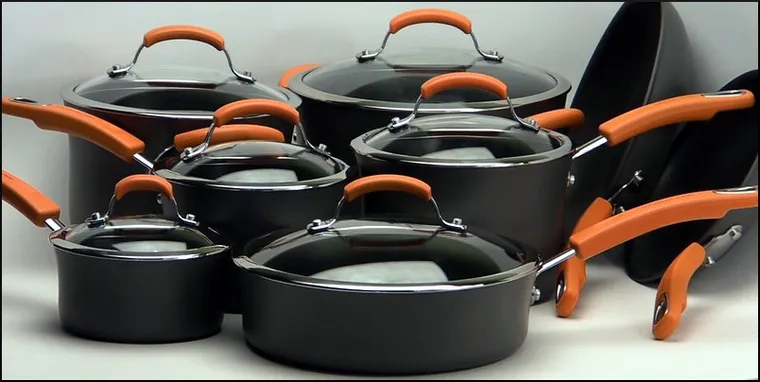Polytetrafluoroethylene = PTFE = Teflon
Cool?
We have our terms defined.
Sometimes on uneventful weekends I’ll choose to wander through the kitchen areas of department stores, or (more rarely) higher-end kitchen shops hoping to ward off the affliction of boredom. Within these establishments there always seems to be a particular sale table, set apart from the electric mixers, china sets, and baking dishes, that contain boxed-up and complete sets of pots and pans that are all lined with Teflon. “What a fucking waste!” I usually think. Or if I am feeling a little more elitist: “Who in the hell would honestly drop money on that?” But people continue to do so, just as they seem to keep buying expensive knife block sets where every freaking knife is serrated.
Face palm.
These pan sets are not limited to one brand either, and there are both high and low price points in this travesty. If you are in the market for new pots and pans, please, PLEASE do not purchase a set where everything is non-stick – hear me out on this.
Why Teflon on Everything Sucks
My argument is simply this: You only need one, or maybe two Teflon coated pans, and everything else is a waste of material and money. But why? Wear and tear, and Fond.
Fond is a contraction for the French term fonds de cuisine which is a flavorful liquid that is the base of things like stocks, broths, and gravies. Fond is also used to describe (incorrectly) the brown bits left over in a pan after sauteeing or searing something. Deglazing a pan with some kind of liquid is what creates the fond, and one cannot do this in a Teflon pan. Sure, you could brown a chicken breast, or eggs, or fish, but there is nothing left over from which to construct a sauce or a soup base.
Don’t get me wrong though, I use a nonstick pan, a lot. There are many situations where you may not want to build a fond – searing delicate fish filets, or frying eggs, or scrambling the same. But for just about everything else one does in a pan, stainless steel, cast iron, and high carbon steel are way better for the other opportunities they provide.
Teflon also wears out easily. Dishwashers, scouring pads, scrub brushes, metal tongs and spatulas, thermal shock, and oven use all can damage the coating irreparably. When I replace mine (once a year at least) I go for the best inexpensive option I can find. No matter how careful you are with washing and storage, the Teflon coat always wears eventually – ceramic and silicone coated pans also suck for this reason – so dropping $110 on a big-name Teflon coated frypan makes no sense.
There are also pitfalls to avoid when using non-stick. Heating any Teflon coated cookware beyond 450°F (or 500°, I’ve heard both) causes toxic fumes that cause flu-like symptoms if inhaled. That alone definitely rules out roasting pans.
I have also heard from many people who are concerned with possible carcinogenic chemicals leaching into their food. Not to worry, because Teflon is basically inert. Even eating tiny flakes from worn-out pans probably just pass through your digestive system without any chemical interactions. I have seen arguments for and against my opinion here, but I have read enough of the science to where I am not losing any sleep over correctly using an unworn Teflon pan.
So, keep a cheap non-stick around and replace it once it begins to wear, but use more of your hard earned money to acquire good stainless steel and cast iron pans. You’ll have them for a lifetime.
Which Nonstick Pan Do I Prefer?
As of this writing I like TFal’s 12-inch fry pan. I eat a lot of eggs (most weightlifters do) and that pan has space for at least 6 eggs but it also fits the standard lids from my stainless steel pans of the same size.
\m/

